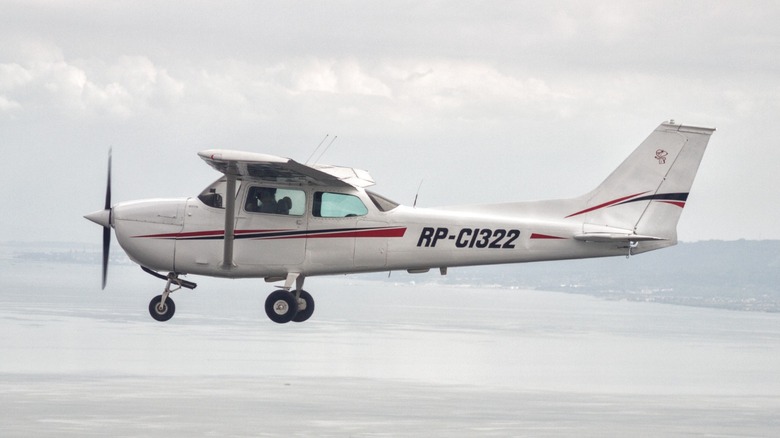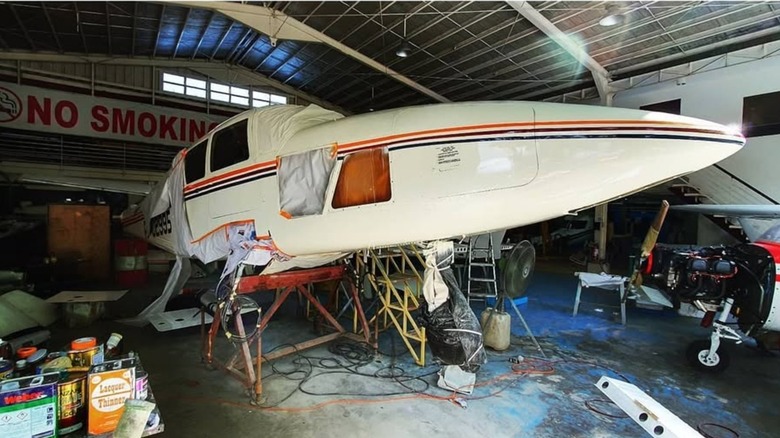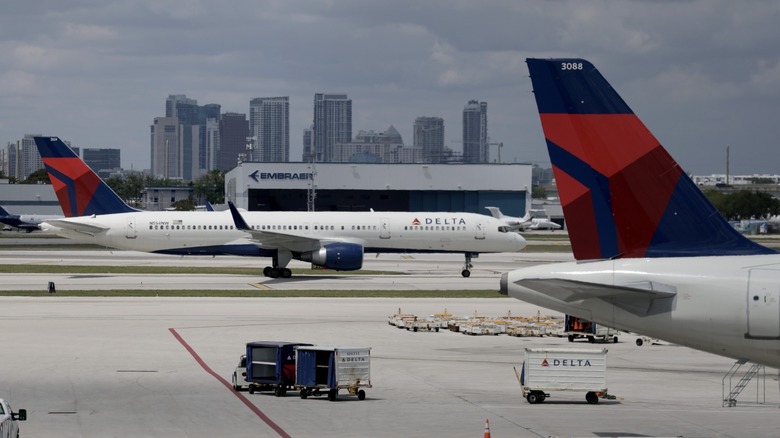Are Old, Heavily Used Airplanes Still Safe And Dependable?
Many people say high-mileage, old cars are unsafe and unreliable. This can be true for most automobiles, but does it also apply to airplanes? After all, if a car breaks down while driving, it's easy to stop on the shoulder. But if you lose all power in the air — like when multiple bird strikes disabled the engines of U.S. Airways 1549 — you better hope you have a great pilot who can safely get you on the ground.
That's why you may ask: Are old, heavily used airplanes still safe and dependable? After all, if you're flying, which is actually the safest form of transportation, you'd want to reach your destination in one piece. Thankfully, a plane's safety and dependability are not directly related to its age, meaning even one of the oldest aircraft still in service today will likely get you where you're going.
The International Air Transport Association (IATA) (PDF) lists the average airliner age at 14.8 years. That's slightly higher than the 12.6-year-old average car age in the U.S., according to S&P Global Mobility. But you're in for a bigger shock with general aviation (GA) aircraft, which are every other civilian flight that is not operated by an airline. According to the FAA (PDF), the average age of the GA fleet will approach 50 years by 2020. Given that it's already 2025, many aircraft flying today are well over 50 years old.
I'm a pilot myself, and I've earned my wings on a Cessna 152, one of the most popular single-engine planes. This plane was last produced in 1985, and since I received my license in 2020, the plane I was flying on was at least 35 years old at that time. Nevertheless, it was still a dependable workhorse that I and hundreds of other pilots have used to gain experience.
How do these old planes stay so safe?
Even though many aircraft have been flying for over half a century now, how can they stay safe despite their age? The main reason for this is maintenance — but this isn't the usual service that you do on cars, where you bring it to a car shop every set number of miles or months. Instead, it's done based on several factors, primarily based on the number of hours that an engine has flown and the number of cycles (or take-offs and landings) a particular airframe has taken.
The maintenance procedures done between these intervals are set in stone by the manufacturer and written in the aircraft maintenance manual. More than that, these processes can't be done by just anyone. Instead, they're handled by an FAA-licensed aircraft mechanic who has taken an 18-to-24-month course plus several more months of practical experience. Furthermore, some work, like engine overhauls and structural work, can only be done in a maintenance, repair, and overhaul (MRO) facility.
Aside from the licenses for both the technician and the organization handling the work, almost every part you put on a plane must also be certified by the FAA. This includes everything from the airplane engine to the smallest screw and bolt — that's why anything that's certified for use in aviation are typically way more expensive. More importantly, pilots always do a walk-around before every flight. That means I physically check the airplane and its fuel before taking off, helping catch anything missed by the maintenance personnel. And if I feel something is not right with the plane, I put it in the logbook after every flight, making sure that it has been checked before the plane takes off again.
Why are planes so old?
Now that we know how planes stay safe despite their ages, the next question is why they're so old in the first place. The primary reason for this is the acquisition cost. Airplanes aren't cheap, especially new models that have just come out. A brand-new Cessna 172 costs between $450,000 to $600,000, while you can get a used one for between $50,000 and $300,000.
That massive price difference is more than enough to give anyone pause, especially as stringent maintenance requirements ensure that an old plane is just as safe as a new one. Furthermore, aviation's great safety record means that there are only a few hull-loss incidents per year compared to the number of airframes flying. So, there's less reason for private owners to buy a plane when they already have one, whether new or used. This is a different story when it comes to the airlines, though, where fleet age varies depending on company strategy. For example, Spirit Airlines' fleet has a relatively young age of 6.1 years. As newer jets are typically more fuel efficient, this low-cost carrier can save a lot of money on fuel, allowing it to reduce its ticket prices. However, they're also pretty expensive — so Spirit must ensure that its aircraft have a higher utilization, to ensure that it can pay for its investment.
On the other hand, Delta Air Lines' fleet age is 15.3 years. This is much older, especially considering that it's a mainliner. And while its jets aren't as thrifty as Spirit's, it allows the company more leeway, as it can afford to park some of its jets during the off-season without risking losing money.


